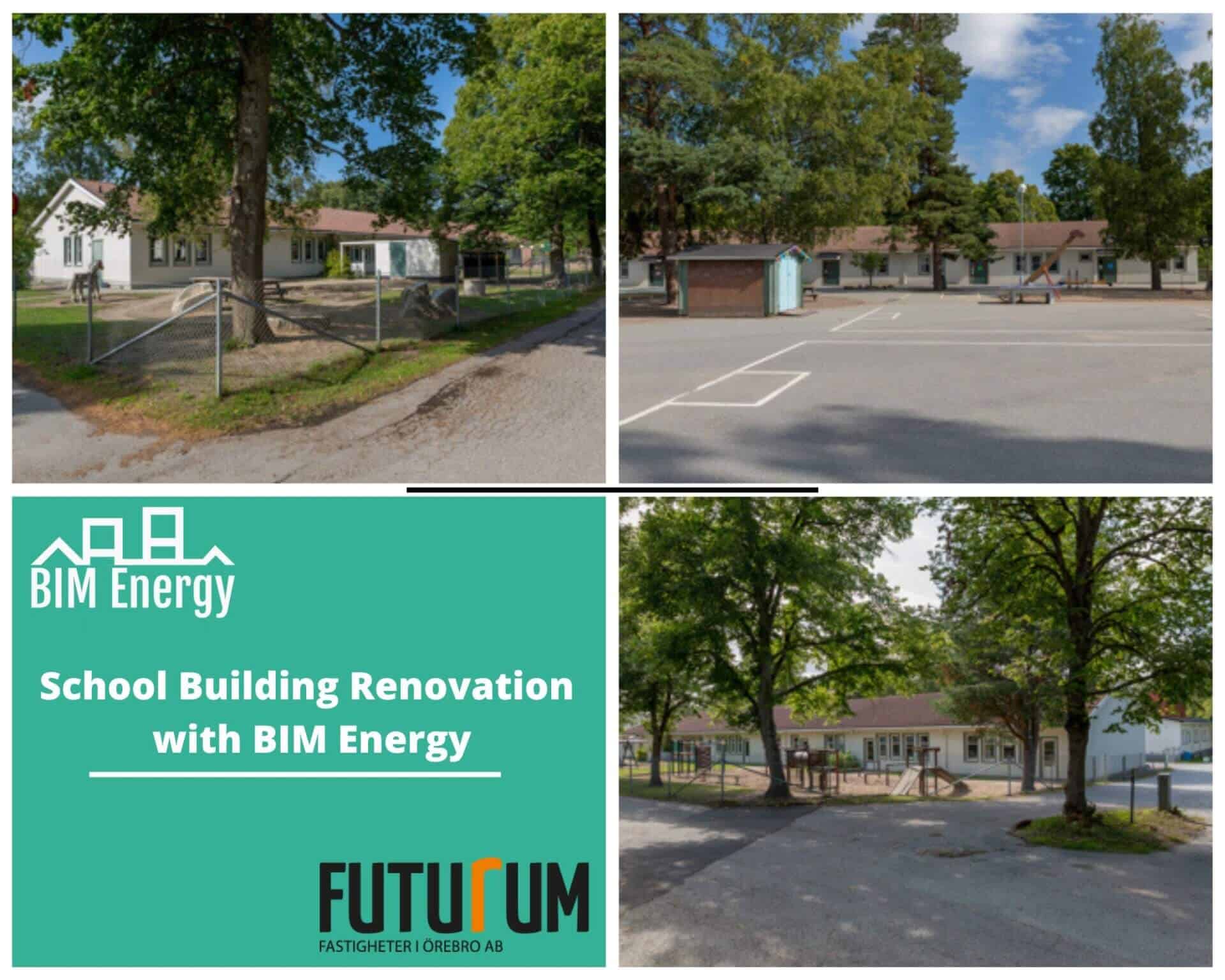Optimizing School Building Renovation with BIM Energy

In this case study, we delve into Mia‘s role as an Energy Strategist at Futurum Fastigheter i Örebro AB, a municipal real estate company wholly owned by Örebro Municipality through the Örebro Rådhus AB group. This public company focuses on creating spaces where children and young people spend a significant portion of their time.
Futurum’s property portfolio encompasses secondary schools, primary schools, preschools, and various other properties. The latter category includes six fire stations and several specialized residences. The overarching objective of Futurum is to develop sustainable properties and environments that meet the standards for children. This entails the management and construction of properties designed for long-term sustainability.
The total holdings of Futurum’s properties amount to approximately 400,000 square meters, with preschools accounting for about half of this area. The remaining space is allocated roughly as follows: primary schools (30%), secondary schools (2%), and other properties (12%).
Mia effectively utilized BIM Energy in streamlining the energy optimization process for a school building renovation project. The project aimed to significantly reduce energy consumption in the school buildings, and Mia successfully leveraged BIM Energy to achieve this objective in an efficient manner
Project Overview:
Mia’s role as an Energy Strategist involved finding practical solutions to improve the energy efficiency of existing school buildings in the municipality. One specific project involved renovating an ageing school building with inadequate insulation, leading to increased energy consumption, especially during harsh winter weather conditions. Mia utilized BIM Energy to assess the feasibility of adding insulation to the building’s roof.
Challenges and Objectives:
The main challenge in this project was determining whether adding insulation to the roof would be cost-effective in the long run, considering the building’s age and location in a region with severe winters. Mia’s primary objective was to assess the energy-saving potential of the proposed insulation.
Before
After
The result from BIM Energy before the Renovation:
Project Timeline:
The renovation project took approximately one year to complete. However, Mia’s involvement, which mainly focused on BIM Energy calculations, was shorter.
Why BIM Energy?
Mia chose BIM Energy due to its user-friendly interface and rapid energy consumption calculations. BIM Energy provided a valuable tool for assessing existing buildings’ energy efficiency, making it particularly suited for projects involving older structures.
Key Features and Functionalities of BIM Energy:
Mia highlighted the following key features and functionalities of BIM Energy that played a crucial role in successfully completing the project:
- Fast and User-Friendly: BIM Energy’s speed and ease of use made it a preferred choice for quick energy calculations.
- Construction Module: Mia found the construction module beneficial for creating accurate building representations, particularly when dealing with existing structures of varying ages and constructions.
Integration into Workflow:
Mia mentioned that BIM Energy seamlessly integrated into her workflow, although she also mentioned that her tool usage was primarily focused on energy calculations rather than collaboration with structural engineers.
Impact on Efficiency:
The efficiency and speed of BIM Energy were key advantages, allowing Mia to complete her energy calculations swiftly and accurately, ultimately contributing to the project’s success.
Cost Savings
The results after Renovation:
- Updated Energy Performance:
The energy efficiency of the school building improved from 75.9 kWh/m² before the renovation to 66.9 kWh/m² after the renovation. Specifically, heating efficiency decreased from 67.0 kWh/m² to 57.9 kWh/m², showcasing better heating performance. - Updated Specification of Energy Supply:
The total heat supplied decreased significantly from 49,441.87 kWh (69.15 kWh/m²) before the renovation to 42,989.33 kWh (60.12 kWh/m²) after the renovation. Heat supplied through the heating system also notably decreased from 47,384.49 kWh (66.27 kWh/m²) to 40,931.95 kWh (57.25 kWh/m²).
The renovation project led to a nice improvement in the overall energy efficiency of the school building. Better heating performance and enhanced cooling efficiency demonstrate the positive impact of the renovation and use of BIM Energy on energy usage. While there was a small increase in electricity use, there’s an opportunity to optimize electrical consumption for a more eco-friendly and efficient solution.
These post-renovation results highlight the importance of continuous monitoring and adjustments to the building’s energy systems to ensure better performance and long-term sustainability.
Future Use of BIM Energy:
Mia expressed her intention to continue using BIM Energy for future projects, emphasizing the tool’s value in assessing and improving the energy efficiency of existing buildings.
Conclusion:
This case study highlights how BIM Energy can empower energy strategists like Mia to efficiently assess and improve the energy efficiency of existing buildings.
BIM Energy was important in achieving energy cost savings for the school renovation project with its user-friendly interface and rapid calculations. Mia’s positive experience and intention to continue using the tool for future projects demonstrate its value in the field of energy optimization.



